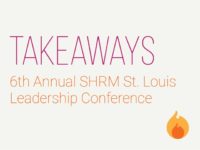Adam Grant hit the nail on the head in his latest WSJ article: “The Great Resignation is not a mad dash away from the office; it’s the culmination of a long march toward freedom.”
Remote work is a key example of freedom (or flexibility as Grant further defines it).
But flexibility = remote work is too narrow a definition that not only limits the scope to those who can do their work remotely, but also misses the point that what we really want is flexibility through agency.
In his article, Grant defines flexibility as “the autonomy to choose your people, your purpose, and your priorities.” It goes without saying that each organization and role within it will create limitations on the level of flexibility employees can have. But flexibility is possible everywhere.
With occasional and role-specific exceptions, choosing our purpose and who we work with happens mostly by joining or leaving a company. It’s one of the many reasons why DEI and ESG have become increasingly common and elevated strategic priorities for organizations – both are key to how we build a sense of belonging with an organization (as an employee or customer) that ultimately determines whether we stay/leave or are engaged/disengaged.
Belonging of course isn’t something you receive once you join, it’s something you develop over time. And it’s much harder to build belonging in a remote setting. In his article, Grant cites a study of 60,000 Microsoft employees that “found that [employees’] personal networks became more siloed and static. There were fewer new connections between people, fewer bridges between teams, and fewer real-time conversations within groups.”
It’s why we believe every organization needs a workplace relationships strategy. For more on that, check out our paper “Remote Work, Culture at Risk“,
Agency over our priorities is where organizations have a huge opportunity to make flexibility a core pillar of their employee experience strategy and to leapfrog competitors in talent, engagement, and business performance.
At the risk of oversimplifying, let’s consider Agency over our priorities as (1) control over the work itself (what and how) and (2) control over our time.
We’ve known the benefits of #1 for a long time and it’s true irrespective of remote work. While there are of course (again) role and organization-specific limitations, engaging employees in determining their goals and how they plan to get there is a recipe for high engagement, performance, and innovation. The bigger your company gets, the harder this is to do.
How we choose to spend our time is perhaps the most important expression of our priorities. And even though not all employees can do their work remotely, every employee can have more control over their time.
And by giving employees more control over their time, organizations can save money and increase productivity. There is of course a relationship between time spent working and outcomes, but also diminishing returns.
In his article, Grant cited studies that estimate companies waste $100B annually paying for idle time and a 40% productivity increase for Microsoft Japan when they moved to a 4-day workweek. In other words, each week there are several hours we work that are low productivity.
What if we could trade those low productivity hours for something better?
At Bonfyre, one way we’ve done this is through our “10% Time” program where team members can take Friday afternoons to spend however they see fit. Fitness, errands, family/friends, travel, and learning are some of the many ways employees have spent this time. Wellbeing and engagement benefits aside, it’s also led to new product innovations.
In another example from his article, Grant describes manufacturing company Semco’s opt-in policy for frontline employees to trade 10% of their salaries for Wednesdays off. The program was very popular with employees in their 20s (notably a critical demographic for manufacturing companies!) and is an example of a “no-cost” way to give employees agency through choice.
So how can organizations incorporate Agency over our priorities (time) into their talent strategy? Some ideas to consider:
- We need to build trust to create a culture where flexibility is possible. It’s much harder to build trust and belonging virtually and leaders need new skills and technology that makes it easy for them – so they don’t have to remember when or spend time researching what to do. (note: this is why we created Culture Coach!)
- Measure outcomes rather than hours spent. We’ve been heading down this road for some time and the progress we’d made enabled the precipitous move to remote work. The more we can objectively measure role-level performance (including working with employees to measure the right things!), the more flexibility and control over time we can give employees. Everyone wins.
- Frontline organizations have some of the steepest barriers to flexibility, but also the most to gain. Whether it’s following Semco’s example or, although easier said than done, finding ways to align compensation with “widgets made”, frontline organizations can create incentives to work more productively and/or reset expectations around hours worked.
- Expect more gig economy/1099-type roles. Organizations that create better systems for part-time or contractor talent – from enabling their work to helping them feel part of the team – will be more agile, productive, and attractive to candidates.
This push toward greater flexibility and agency within the workforce represents a significant opportunity for companies that can harness its potential. It’s exciting to see how these strategies are taking shape, and we have much to learn from one another.



 4 min
4 min




